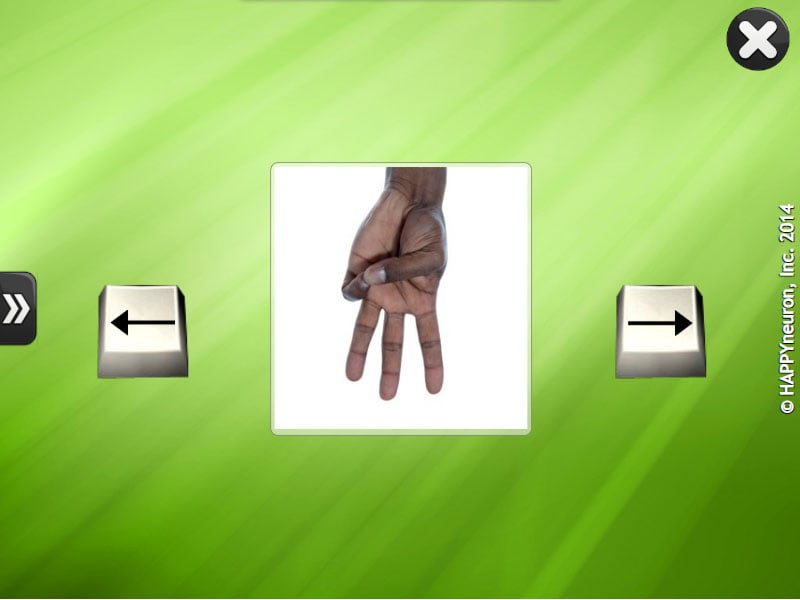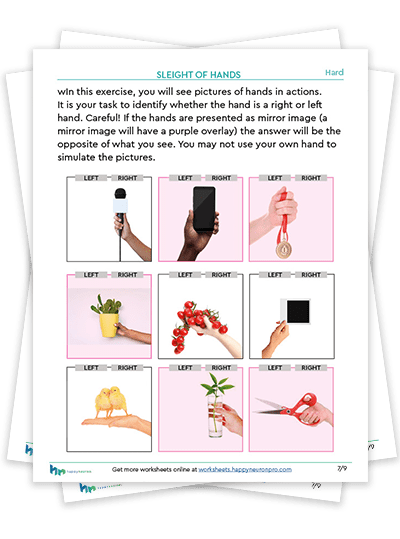
Please note that you can only play the exercise once on this page. See the free trial section below for full access!
In this exercise, the user must decide whether a hand on the screen is left or right. To provide a varying degree of challenge, the hand can be presented under various conditions: just the hand itself, the hand in action with an object, or a mirror image of the hand.

It is widely acknowledged in neuroscience and psychology research that problem-solving abilities rely not only on language-analytical reasoning but also on temporal-spatial skills that we use to visualize some problems.
Mental rotation, the main ability used in this exercise, usually takes place in the right cerebral hemisphere of the brain, more specifically, in the parietal regions where perception also occurs. Mental rotation comparison tasks can be analyzed into five steps: (1) create a mental image of an object, (2) rotate the object mentally until a comparison can be made, (3) make the comparison, (4) decide if the objects are the same or not and (5) report the decision.
Spatial reasoning is an important ability that we use daily. We employ spatial reasoning skills to navigate walking in the streets or explain where items should be placed. The skills utilized in Sleight of Hands may also help improve tasks that require individuals to differentiate between their left and right hands, such as shaking hands, typing, and playing video games.
You can modify:
Over 600 unique exercise configurations and significant data set depth.

Pricing + Offers


© 2023 HappyNeuron is a Product of Humans Matter